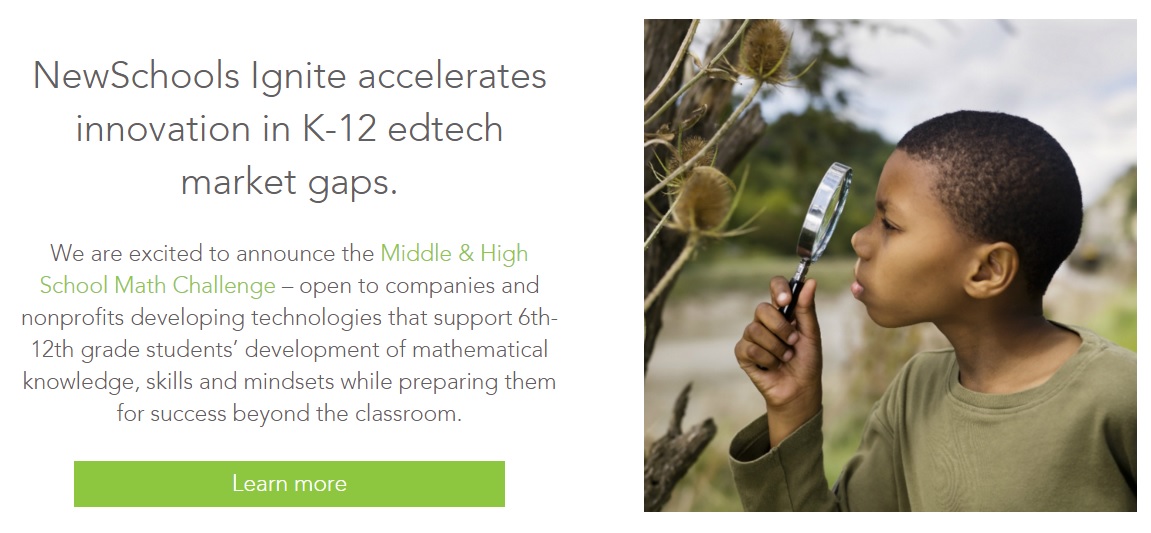Our grandparents can all recall the days of reciting the times table, facing a dusty blackboard. They can all remember doing math problems from the same textbook, which was passed on to the next graduating class and then the next, despite new discoveries in the field.
The world has changed a lot since then—we have eradicated some devastating diseases, we can instantly video conference with friends on the other side of the globe, and we’ve landed a probe on a comet. Needless to say, we couldn’t have done any of these things without math—a lot of it. In past generations, a select group of math lovers went on to contribute to these types of advancements. The majority needed less complicated math for day-to-day tasks, like cooking and balancing a checkbook.
But with more technological advances, the demand for math skills has increased across industries, from computer science to agriculture. In response, the edtech market has seen an influx of digital math learning tools, but many miss the mark in fostering the kind of math skills we need in today’s world—and tomorrow’s. The paper flashcards of yesterday that we used to learn our times tables have been transposed into digital flashcards, and math games that emphasize repetition as a means to memorization abound.
Unfortunately, memorization doesn’t produce the world’s Einsteins. Einstein, a math genius who last week proved once again to be a man ahead of his time, once wrote that the spirit of learning and creative thought are lost in rote learning—and after speaking with educators, researchers and math learning experts, we agree. Despite a glut of math tools, the market is experiencing a dearth of the kind of tools we really need, tools that help students move beyond rote learning and embrace conceptual math so that they can solve problems creatively. Too many edtech tools rely on the antiquated approach of memorization over application, which has frustrated both students and teachers—and is causing many students to throw up their hands and walk away from math. Einstein had been warning us all along that this would be a problem.

In February 2016, NewSchools Ignite launched the Middle & High School Math Challenge.
This comes to a head when students reach middle and high school math. Mastering courses like algebra and freshman math are deeply linked to high school graduation rates, and thus college attendance rates. A recent study showed that an estimated 40% of the achievement gap was due to low-quality math curriculum, and less math offerings are tied to lower college attendance rates. For students whose highest level of math was Algebra II, only 39% obtained bachelor degrees, versus those who complete pre-calculus.
No one is more affected by this than minority and low-income students, with many falling into both categories. Black and Hispanic students have the lowest access to a full range of math courses, and also collectively experience the highest rate of extreme poverty over other ethnicities. Additionally, underserved students have started claiming the majority; 51% of U.S. students live in poverty, and by 2020, minorities will make up more than half of children in the country. We see this in the numbers; recent PARCC and Smarter Balanced scores (like the NAEP scores before them) confirm that many students—especially black and Hispanic/Latino students—are still struggling to attain mathematical proficiency. Since a good education is essential to emerging from poverty, those statistics do not bode well for a shocking percentage of the next generation.
That’s why, following last year’s Science Learning Challenge, NewSchools Ignite will invest $1.5M in companies that are building math learning tools with the potential to make a difference. Our investments focus on social impact, which is why we are placing a particular emphasis on edtech tools that meet the needs of all students, particularly the ones who need them most.
A good education—and the ability to apply it to create something new and solve real-world problems—brought us the people who cured polio, created the Internet and invented solar panels. If we want to see more of those types of advancements, we need to make sure today’s students—all of them, not just some of them—have the math foundation they need in order to change the world.
Help us get the word out about our new Middle & High School Math Challenge by sharing the news. The more people who hear about this initiative, the better the chances we’ll find companies doing impactful work. Applications are now open through March 14, 2016.